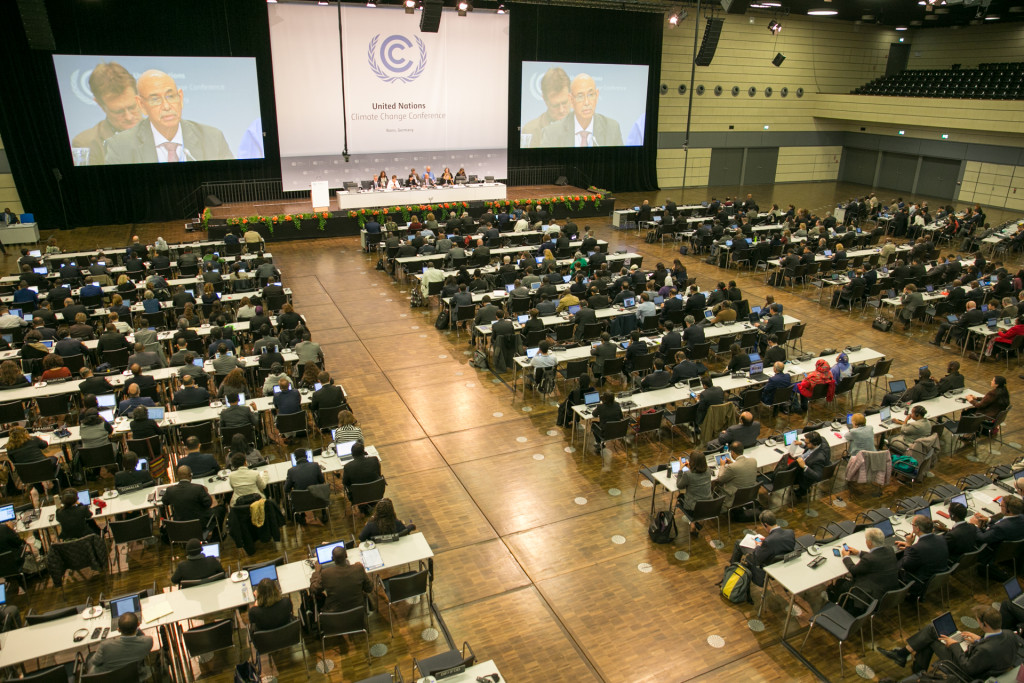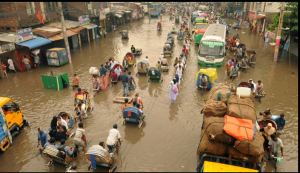It’s been a year of catastrophic climate events. Rains of biblical proportions across South Asia brought floods that affected more than 41 million people and killed at least 1,200. Record-breaking hurricanes claimed lives and destroyed infrastructure across several island states in the Caribbean and in towns and major cities in the southern United States. Drought gripping Africa put 20 million people in Somalia, South Sudan, Nigeria, and Yemen at risk of starvation. And for the third year in a row, countries with coral reefs – from East Asia and the Pacific to northern Africa – have seen massive sections of their reef systems die due to heat stress from unsustainably high ocean temperatures.

All these events across the globe shout the same warning: we must accelerate climate action and deliver on the goals of the Paris Agreement. At this year’s UN Climate COP in Bonn, Germany, the call to action has found an ideal champion in the Fiji Government, making history as the first-ever small island state to hold the Presidency and organize the negotiations.
Since the signing of the Paris Agreement in 2015, many positive steps have been made to accelerate climate action on a global scale. According to the International Energy Agency, global energy-related carbon dioxide emissions were flat for the third straight year in 2016 even as the global economy grew – evidence of a continuing decoupling of emissions from economic activity. Global markets are undergoing a significant transformation led by renewables, thanks to rapidly falling costs for solar and wind power, with batteries taking on a growing role in balancing supply and demand. And carbon pricing is gaining global momentum, with over 40 national and 25 subnational jurisdictions now putting a price on carbon pollution.
A Focus on Mobilizing Finance for Climate Action
Meeting the Paris Agreement’s climate commitments will require investments at an unprecedented speed and scale. That is why mobilizing finance for climate action will be one of the key focus areas for the World Bank Group at COP23. The fact is, there is abundant private financial capital available but much of it is earning low or even negative returns. For many reasons, including weak policy environments and a lack of risk-reducing instruments like guarantees, this capital is not necessarily flowing to where it’s needed most for climate action.
An approach to help unlock this capital is the recently launched Invest4Climate initiative: a new platform convened by the World Bank and the UN, designed to bring together national governments, financial institutions, investors, philanthropists, and multilateral banks to find ways to support transformational climate investments in developing countries.
Green Bonds are also part of the finance solution by raising funds from the capital markets for climate investments in developing countries. The World Bank Group, through the World Bank and IFC, has played a leading role in developing the green bond market by raising over $15 billion in green bonds since 2008 for investments in climate action around the world, and by helping develop the market best practice for standards and reporting. The World Bank and IFC are working with countries to put in place frameworks for sovereign and private sector green bond issuances. Last month, with assistance from the Australian Government and the World Bank Group, Fiji became the first emerging market to issue a sovereign green bond, raising 100 million Fijian dollars, or US$50 million, to support climate change mitigation and adaption.
A key element of the Paris Agreement was the country-level commitments to action, known as Nationally Determined Contributions or NDCs. Each NDC commits countries to a range of actions aimed at reducing their emissions and build resilience to climate change impacts. For its part, the World Bank Group is supporting around 300 initiatives across 77 countries related to NDC implementation through investments in areas including energy, agriculture, and transport. And through the NDC Partnership Support Facility launched at COP22 in Morocco in 2016, over $8 million in grants is now flowing to the first set of 23 countries for NDC-related technical assistance, capacity building and project action.
And through the Climate Action Peer Exchange or CAPE – developing country finance ministries are sharing knowledge with each other on meeting the fiscal challenges of implementing NDCs. A recent CAPE workshop in Shanghai brought together finance ministry staff from 13 countries to discuss approaches to carbon taxes, applying fiscal risk assessment models and establishing climate budgeting systems.
Protecting the Most Vulnerable
Ahead of its COP23 Presidency, Fijian Prime Minister Voreqe Bainimarama underlined the importance of bringing the perspective of Pacific Islanders and other SIDS and low-lying areas to the global attention given their vulnerability to sea level rise and more frequent violent weather. Following the two major hurricanes that hit the Caribbean in September, the Caribbean Catastrophe Risk Insurance Facility, which was set up under the technical leadership of the World Bank, made rapid payouts to 10 Caribbean countries totalling $55 million.
Securing access to financial resources before a disaster strikes is also important. This includes instruments such as emergency funds, insurance mechanisms and contingency lines of credit such as the Catastrophe Deferred Drawdown Option, or Cat DDO. In September, the World Bank board approved a US$150 million Cat DDO to the Dominican Republic to provide immediate financing for emergency relief in case of a natural disaster.
Disaster preparedness and building resilience to the impacts of climate change, especially in the most vulnerable countries, is a key part of the World Bank Group’s Climate Change Action Plan. This includes ambitious resilience targets including putting in place early warning systems and hydro-meteorological data for 100 million people; developing climate-smart agriculture investment plans for at least 40 countries; increasing adaptive social protection for an additional 50 million poor people by 2020; quadrupling funding for resilient transport; and piloting a new urban resilience development approaches in 15 cities.
A good example comes from Africa where a total investment of $600 million under the Africa Hydromet Program, will deliver modern hydro-meteorological services and improved early warning and response systems in 15 countries. This multi-partner program is expected to assist 100 million people in an eight-year time frame.
And in coastal West Africa, which is under intense pressure from sea level rise and coastal erosion, the planned West Africa Coastal Areas (WACA) Resilience Investment Project, aims to give countries access to expertise and finance to sustainably manage their coastal areas. This response to countries’ need for solutions and finance to help save the social and economic assets of their coastal areas. – World Bank Group <WorldBank@newsletterext.worldbank.org>




